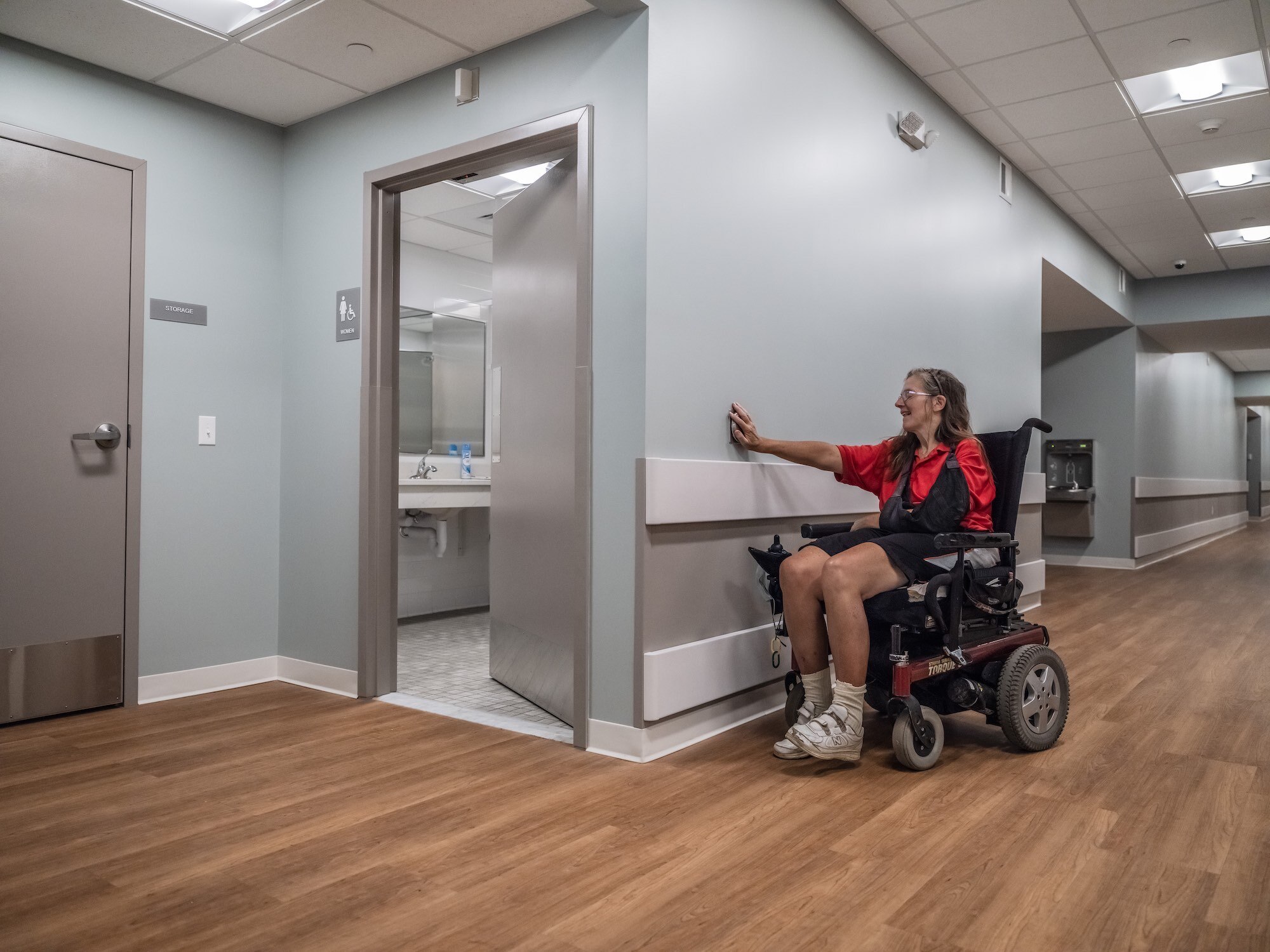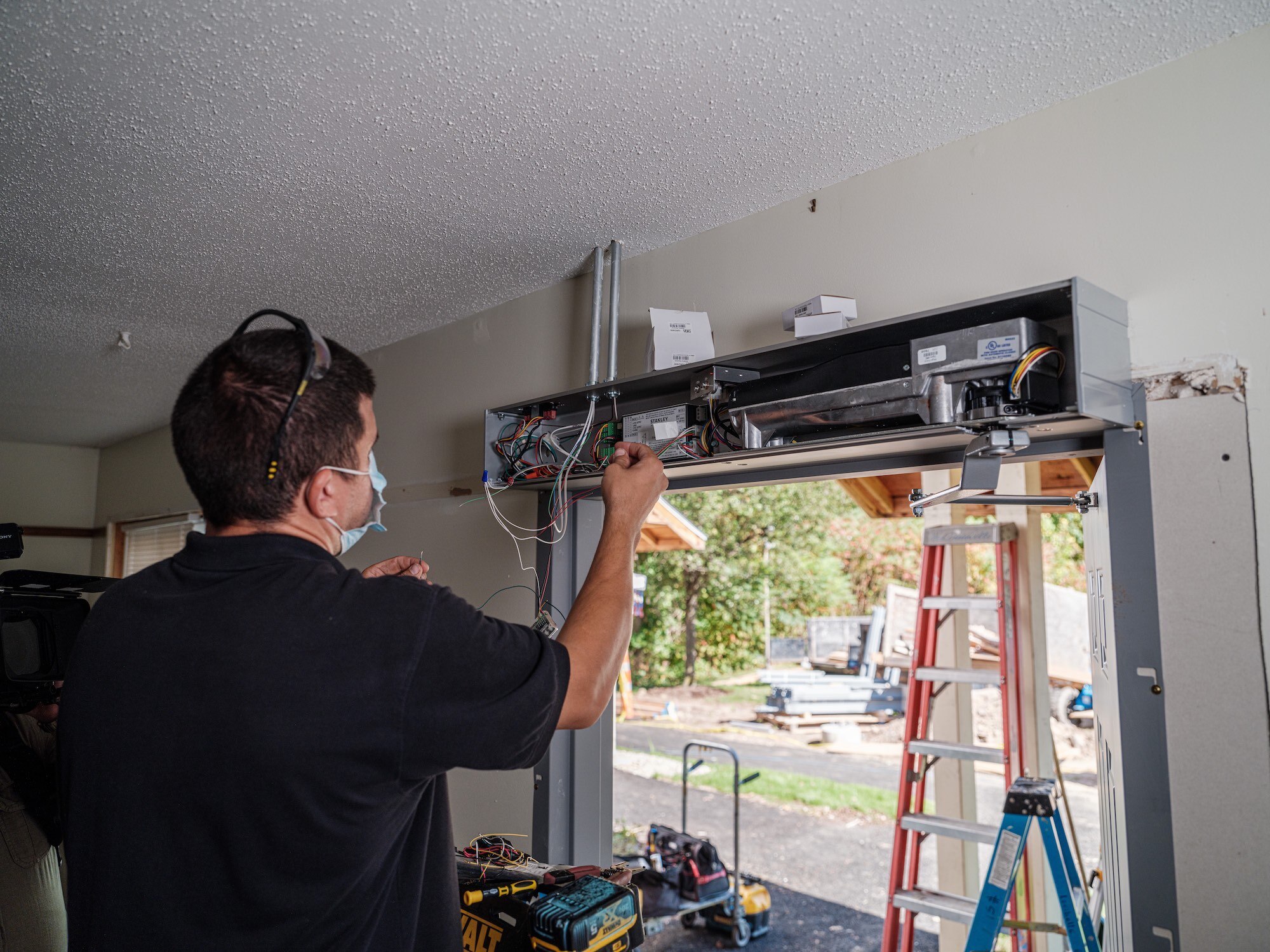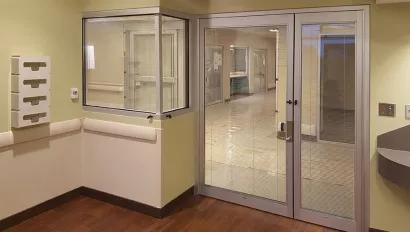Commercial Door Height and Width Standards
Whether they are being retro-fitted to an existing facility or a part of a completely new design, commercial doors are a critical part of any facility. As such, there are minimum requirements that apply to all commercial doors that will vary depending on the type and usage of the door: sliding vs. swing, automatic vs. manual, exterior vs. interior, and more. Determining the correct standard commercial door size for your application, however, doesn’t have to be a difficult task. With some basic code and compliance information and the resources to find the specific information you need for an individual or out-of-the-ordinary situation, mastering commercial door requirements can be a snap. Here’s what you need to know.
From Confusion to Clarity: Standard Commercial Door Widths
For many years, there was a lot of confusion about how to measure commercial doors . Over time, however, the codes and standards have been clarified, and now include instructions for how to measure the width of a door opening. Acceptable projections into the required clear opening width have also been defined.
These requirements are found in the International Building Code (IBC), the International Fire Code (IFC), ICC A117.1 – Accessible and Usable Buildings and Facilities, the 2010 ADA Standards for Accessible Design, and NFPA 101 – The Life Safety Code. Note that the minimum clear opening width does not apply only to standard commercial doors that are used for entrance and egress, but also to doors on any accessible route.

Clear Opening Width Requirements:
-
Sliding and folding doors in most locations must provide at least 32 inches of clear opening width. Accessibility standards require sliding doors – including pocket doors, to have surface-mounted hardware. This hardware may prevent the doors from sliding fully open; affecting the clear opening width.
-
All commercial swing doors must typically provide a minimum of 32 inches of clear opening width.
-
Clear opening width for swing doors is measured between the face of the door and the stop on the strike jamb, with the door open 90 degrees. In many cases, swing-clear hinges may be used to increase the clear opening width, by relocating the 90-degree position of the door.
-
For pairs of manually-operated doors, at least one leaf of the pair must provide 32 inches of clear opening width, when measured from the face of the open door to the edge of the inactive leaf in the closed position (or to the mullion). When replacing an existing pair of 30-inch doors, an unequal-leaf pair is usually required.
-
For pairs of automatic swing doors, the accessibility standards allow the full width of the opening (the clear width of all leaves in the open position) to be taken into account when measuring the clear opening width. Adding automatic operators may be an acceptable way to resolve clear width problems on existing doors. Note that the IBC requires one leaf of a pair to provide 32 inches clear and does not differentiate between manually-operated and automatic doors regarding clear opening width.
-
Bi-parting automatic sliding doors in a means of egress application are exempt from the minimum 32-inch single leaf requirement.
-
Openings with or without doors that are more than 24 inches deep, must provide a clear opening width of at least 36 inches (see photo at right).
-
No projections are allowed into the required clear opening width between the floor and a point 34 inches above the floor. This does not necessarily mean that nothing can project off the door. It simply means that nothing can project into the 32-inch required clear width dimension (note manual doors on an accessible route are not allowed to have any projections in the bottom ten inches of door height).
-
Projections into the required clear opening width of up to four inches are allowed between 34 inches and 80 inches above the floor. Since operating hardware is required to be mounted between 34 inches and 48 inches above the floor, hardware is not taken into account unless it projects more than four inches into the clear opening width. Note that NFPA 101 limits these four-inch projections to the hinge side of the opening, between 34 inches and 48 inches above the floor, solely for the purpose of accommodating panic hardware or fire exit hardware.
-
Projections into the clear opening width above 80 inches are not typically limited.
-
Some occupancy types require a greater clear opening width. For example, hospital doors used for the movement of beds are required to provide at least 41-½ inches of clear opening width.
-
Past editions of the IBC and IFC limited the maximum width of an egress door to 48 inches. This dimension is not the maximum clear opening width, but the maximum door size. This maximum dimension has been removed from recent editions of NFPA 101, as well as the 2021 editions of the IBC and IFC.
-
There are exceptions within the codes for some applications. A few examples that the IBC includes are related to some doors in residential occupancies, Group I-3 sleeping rooms and small storage closets.

Standard Commercial Door Heights
The codes and standards also include a requirement for the minimum clear opening height. The minimum headroom requirement is typically 80 inches nominal above the floor, with an allowance for the projection of the stop on the frame head. Most have an exception for a door closer arm or overhead stop arm, which is allowed to project down into the required headroom as long as a dimension of 78 inches of headroom is maintained. Other projections, such as electromagnetic locks, are not currently addressed in the accessibility standards, however, the 2021 edition of the IBC includes a change that allows automatic operators and electromagnetic locks to project down to the 78-inch location.
There are some exceptions to the requirements for the 32-inch clear opening width and 80-inch clear opening height, but typically these are the dimensions to keep in mind when specifying or supplying doors and hardware on an accessible route or in a means of egress. Consult the applicable codes for exceptions.
For most locations, the International Building Code (IBC) requires the ceiling height along a means of egress to be a minimum of 7.5 feet above the finished floor. Exceptions include egress components that are specifically addressed in other sections of the code, such as sloped ceilings, stairs, and ramps. Door height is one of the listed exceptions and is addressed in Section 1010.1.1 of the 2018 IBC.
Section 1010.1.1 – Size of Doors, establishes the clear opening height for doors at 80 inches minimum, with some exceptions that apply to door openings serving dwelling and sleeping units. The IBC Commentary clarifies that the 80-inch minimum height applies to doors in the means of egress, as well as doors that are used for egress purposes, including additional doors over and above the number of means of egress required by the code.
Protrusions into the headroom/required clear opening height are addressed in sections 1003.3.1 – Headroom, and 1010.1.1.1 – Projections into clear width (in the 2021 edition this will be changed to “projections into clear opening”). A minimum headroom of 80 inches is required above any circulation paths, including walks, corridors, aisles, and passageways, and not more than 50% of the ceiling area of a means of egress may be reduced in height by protruding objects.

Where the ADA Comes In
In the ADA Standards for Accessible Design, the required vertical clearance is established in paragraph 307.4 as 80 inches high, minimum. This section includes an exception which is also repeated in Section 404.2.3, which allows the clearance at door closers and door stops to be 78 inches, minimum, above the finished floor or ground. No further clarification is given in the US Access Board’s Guide to the ADA Standards.
ICC A117.1 – Accessible and Usable Buildings and Facilities: The requirements of A117.1 regarding clear opening height are consistent with those of the ADA Standards, are found in the same sections. The A117.1 Commentary underscores the importance of the 80-inch height limitations (with the 78-inch exception for door closers and door stops), stating that one of the more common injuries for people with sight impairments is striking their heads on overhanging objects. The commentary also clarifies that the intent of the limitations on protruding objects is not only for the protection of people with vision impairments but to protect all people from unintended contact and potential injury.
With the slight variations between the next edition of the IBC and the previous editions, NFPA 101 and the accessibility standards, there could be conflicting requirements where one project is required to comply with more than one code or standard. State and local codes and standards could also affect the required clear opening height and allowable protrusions. The Authority Having Jurisdiction (AHJ) can help to determine the requirements for a particular location.

Summary
Although there are a lot of factors to keep in mind when determining correct commercial door requirements, this outline should provide a solid foundation for selecting and installing the correct size commercial door for your facility. Should you require more information, we are always here to answer all of your door-related questions.




